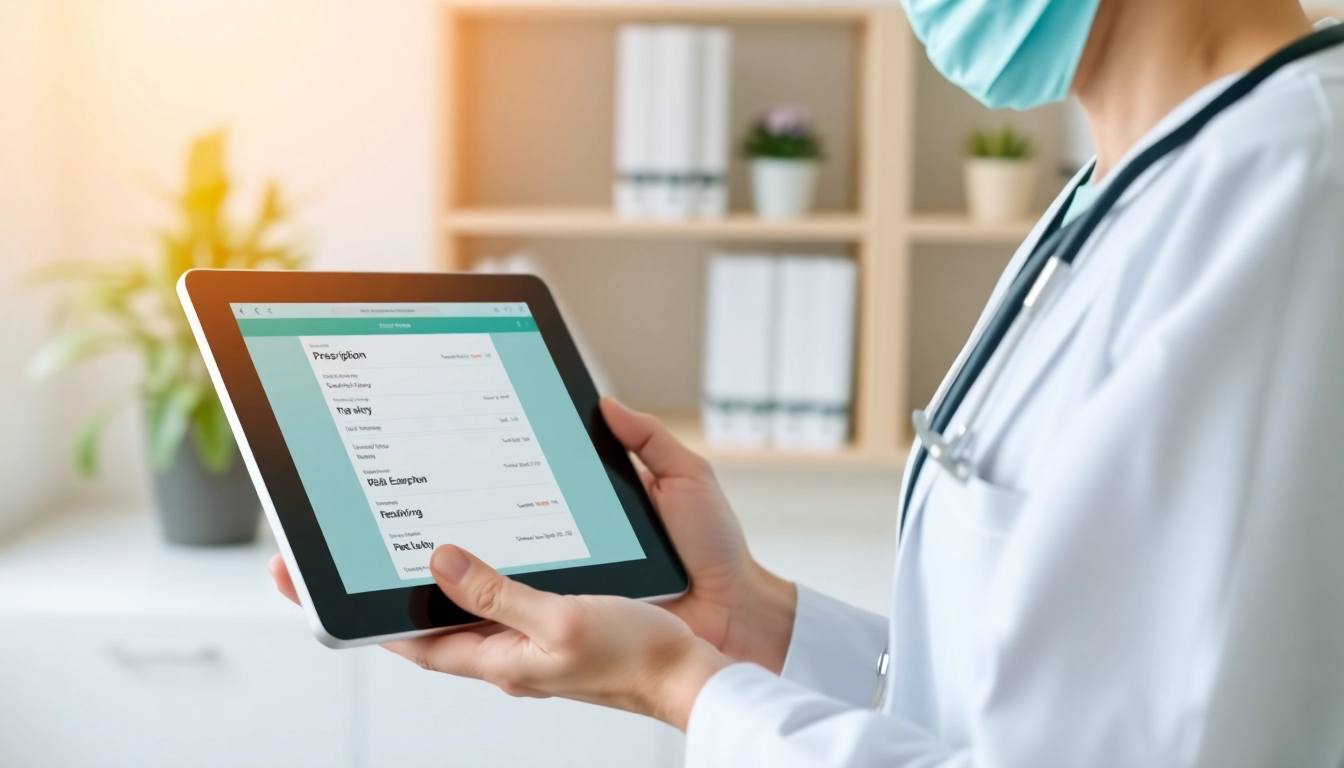
Understanding ePrescription Apps for iOS
What Are ePrescription Apps?
ePrescription apps are digital tools that enable healthcare providers to electronically generate and send prescriptions directly to pharmacies, streamlining the prescribing process for medications. By leveraging mobile technology, these apps simplify the workflow for healthcare practitioners, allowing them to create prescriptions on-the-go, manage refills, and communicate specific instructions with pharmacy outlets. In essence, ePrescription apps enhance efficiency and accuracy while promoting patient safety—ensuring that prescriptions are completed without errors or delays.
Benefits of Using ePrescription Apps for iOS
The increasing reliance on electronic prescribing reflects a shift in the healthcare landscape towards digitization. ePrescription apps for iOS offer numerous benefits, including:
- Improved Efficiency: Healthcare providers can process prescriptions quickly, freeing up valuable time that can be spent on patient care.
- Reduced Errors: Automating the prescription process minimizes the risk of handwritten errors, enhancing patient safety.
- Convenience: Practitioners can write, renew, and send prescriptions through their mobile devices from virtually anywhere, enhancing accessibility.
- Better Tracking and Management: ePrescription apps often include features for tracking medication history and managing refill requests, simplifying patient care.
- Enhanced Communication: Direct communication with pharmacies allows for quick consultations and clarifications, fostering better collaboration in patient management.
Key Features to Look for in an ePrescription App
When selecting the right ePrescription app for iOS, it’s crucial to evaluate specific features that can impact usability and effectiveness. Key features to consider include:
- User-Friendly Interface: An intuitive design allows providers to easily navigate the app, making the prescription process smoother.
- Integration Capabilities: The ability to integrate with electronic health records (EHR) systems can enhance the workflow and keep patient records streamlined.
- Secure Communication: Look for apps offering secure messaging between healthcare providers and pharmacies to protect patient confidentiality.
- Prescription Tracking: Effective tracking features can help practitioners monitor prescription fulfillment and manage patient care.
- Support and Training Resources: Adequate support ensures users can overcome technical challenges, optimizing the app’s potential.
Top ePrescription Apps for iOS in 2025
Comparing the Most Popular ePrescription Apps for iOS
As the market for ePrescription apps evolves, several options have emerged as frontrunners in 2025. Notable mentions include iPrescribe, MDToolbox, and RXNT, each offering unique advantages tailored to healthcare providers’ needs. Below is a comparative look at these apps:
| App Name | Key Features | User Ratings |
|---|---|---|
| iPrescribe | Patient-centered interface, secure messaging, tracking capabilities | 4.5/5 |
| MDToolbox | Comprehensive prescription management, EHR integration | 4.0/5 |
| RXNT | Mobile app for efficient prescribing, workflow management | 4.2/5 |
Customer Ratings and Reviews of ePrescription Apps for iOS
Integration of user feedback is vital for understanding the strengths and weaknesses of various ePrescription apps. User ratings on platforms such as the App Store significantly influence app selection. High ratings often correlate with positive experiences regarding usability, support, and functionality.
iPrescribe, with a rating of 4.5 from numerous users, is often praised for its ease of use and efficient communication capabilities. MDToolbox also demonstrates favorable feedback, noting that its comprehensive features aid in seamless prescription management, while RXNT users value its robust mobile capabilities. Overall, user reviews highlight the significance of selecting an app that aligns with both individual practice needs and patient care goals.
Choosing the Right ePrescription App for Your Needs
Selecting the ideal ePrescription app involves a careful assessment of your practice’s specific requirements. Understanding factors such as practice size, patient demographics, and prescription volume is crucial. Additionally, consider these recommendations:
- Trial Versions: Many apps offer trial periods. Utilizing these trials allows practitioners to evaluate usability and features before committing.
- Peer Recommendations: Consult other healthcare professionals for feedback on their experiences, helping to narrow options more effectively.
- Integration Needs: Ensure that the chosen app can efficiently integrate with existing EHR systems to maintain streamlined operations and data flow.
Implementing ePrescription Apps in Your Practice
Steps for Integrating ePrescription Apps for iOS
Proper implementation is crucial to maximize the benefits of ePrescription apps in healthcare settings. Below are practical steps for integrating these apps into your practice:
- Assess Needs: Identify the specific needs of your practice and potential challenges associated with implementing new software.
- Choose the Right App: Select an app that aligns with your practice’s technical infrastructure and that comprehensively meets your prescribing needs.
- Engage Your Team: Involve all relevant stakeholders, including administrative staff and healthcare providers, in the implementation process to facilitate buy-in.
- Conduct Training: Organize training sessions focused on app functionality and best practices to ensure that all team members are comfortable using the new software.
- Monitor Usage: After implementation, continually monitor app usage and solicit feedback to make necessary adjustments and improvements.
Training Staff on ePrescription Apps for iOS
Comprehensive training is essential to empower staff in effectively utilizing ePrescription apps. Consider the following strategies:
- Hands-on Training: Encourage staff to engage in hands-on practice with the app, helping to familiarize them with its features and functions.
- User Guides and Resources: Provide written resources or video tutorials that staff can refer to when they have questions or encounter challenges.
- Feedback Mechanism: Establish a method for staff to provide feedback on the app’s usability and any issues they may experience, fostering an open dialogue for improvement.
Overcoming Common Implementation Challenges
While implementing ePrescription apps offers multiple benefits, challenges can arise. Recognizing these hurdles ahead of time can prepare practices for smoother transitions:
- Resistance to Change: Employees may resist adapting to new technologies. Addressing concerns and emphasizing the time-saving benefits of ePrescribing can alleviate apprehension.
- Technical Issues: Technical glitches may occur during the setup. Having support resources at the ready can resolve issues promptly.
- Compliance and Regulation Adherence: Familiarize staff with regulations governing electronic prescriptions to ensure compliance and enhance patient safety.
Enhancing Patient Care with ePrescription Apps
Improving Communication with Patients Using ePrescription Apps for iOS
(…)
Managing Patient Records through ePrescription Apps
(…)
Streamlining Prescription Renewals Using ePrescription Apps for iOS
(…)
Future Trends in ePrescription Apps for iOS
Emerging Technologies Impacting ePrescription Apps for iOS
(…)
Predicted Changes in ePrescription Regulatory Frameworks
(…)
The Role of AI in Future ePrescription Apps for iOS
(…)






